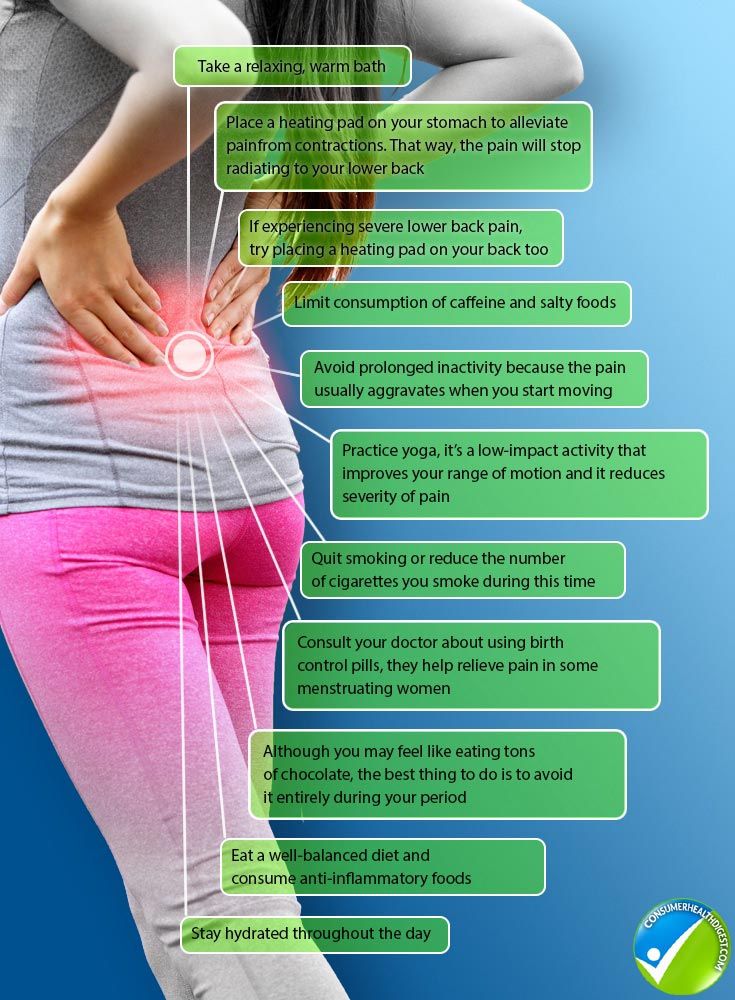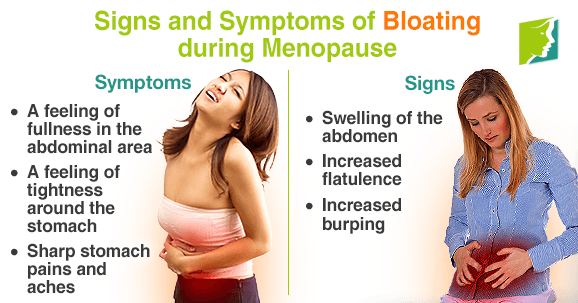Milk for mothers
Breast milk composition | What’s in your breast milk?
It’s full of nutrients that feed and protect your baby, but did you know breast milk composition varies over time? Find out what’s in breast milk and how it changes to meet your baby’s needs
Share this content
As your baby’s first food, you might expect your breast milk ingredients to include basic essential nutrients, such as carbohydrates, proteins and fats, as well as water to keep her hydrated, which it does.1 But breast milk is no ordinary food – it has more value than nutrition alone.
What’s breast milk made of?
Here are some of the other constituents of human milk present at every feed, many of which can’t be replicated:
- Millions of live cells. These include immune-boosting white blood cells, as well as stem cells, which may help organs develop and heal.
2
- More than 1,000 proteins3 that help your baby grow and develop, activate her immune system, and develop and protect neurons in her brain.
- All that breast milk protein is made up of amino acids. There are more than 20 of these compounds in your milk. Some of them, called nucleotides, increase at night and scientists think they may induce sleep.4,5
- Over 200 complex sugars called oligosaccharides6 that act as prebiotics, feeding ‘good bacteria’ in your baby’s gut. They also prevent infections entering her bloodstream and lower her risk of brain inflammation.
- More than 40 enzymes.7 Enzymes are catalysts that speed up chemical reactions in the body. The ones in your milk have jobs such as aiding your baby’s digestion and immune system, as well as helping her absorb iron.
- Growth factors that support healthy development.
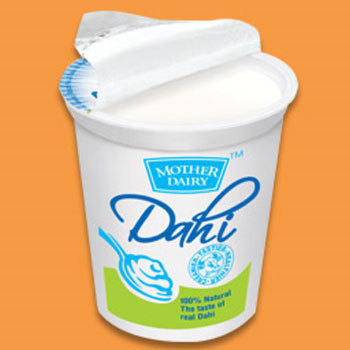 1 These affect many parts of your baby’s body, including her intestines, blood vessels, nervous system, and her glands, which secrete hormones.
1 These affect many parts of your baby’s body, including her intestines, blood vessels, nervous system, and her glands, which secrete hormones. - On the subject of hormones, your breast milk contains lots of them!7 These clever chemicals send messages between tissues and organs to ensure they work properly. Some help regulate your baby’s appetite and sleep patterns, and even aid the bond between you.
- Vitamins and minerals – nutrients that support healthy growth and organ function, as well as help build your baby’s teeth and bones.1
- Antibodies, also known as immunoglobulins. There are five basic forms of antibodies and all of them can be found in your milk.8 They protect your baby against illnesses and infections by neutralising bacteria and viruses.
- You may have heard of long-chain fatty acids because they play a pivotal part in building your baby’s nervous system, as well as aid healthy brain and eye development.
 9 And, you’ve guessed it, there are several of these in your milk too!
9 And, you’ve guessed it, there are several of these in your milk too! - 1,400 microRNAs, which are thought to regulate gene expression, as well as help prevent or halt disease development, support your baby’s immune system, and play a role in remodelling the breast.10
While this is a long list, it’s only some of the ingredients in your breast milk – and scientists are still discovering more. Remarkably, the levels of these ingredients can fluctuate over time, depending on your baby’s age and needs.
Let’s start at the beginning…
The first few days: Colostrum
The early milk your breasts produce after your baby’s birth is called colostrum. This thick, sticky breast milk is often called ‘liquid gold’, not just because of its yellow or orangey colour, but because it’s so important for nourishing and protecting your vulnerable newborn.
At first you’ll produce very small amounts – just 40 to 50 ml (1.4 to 1.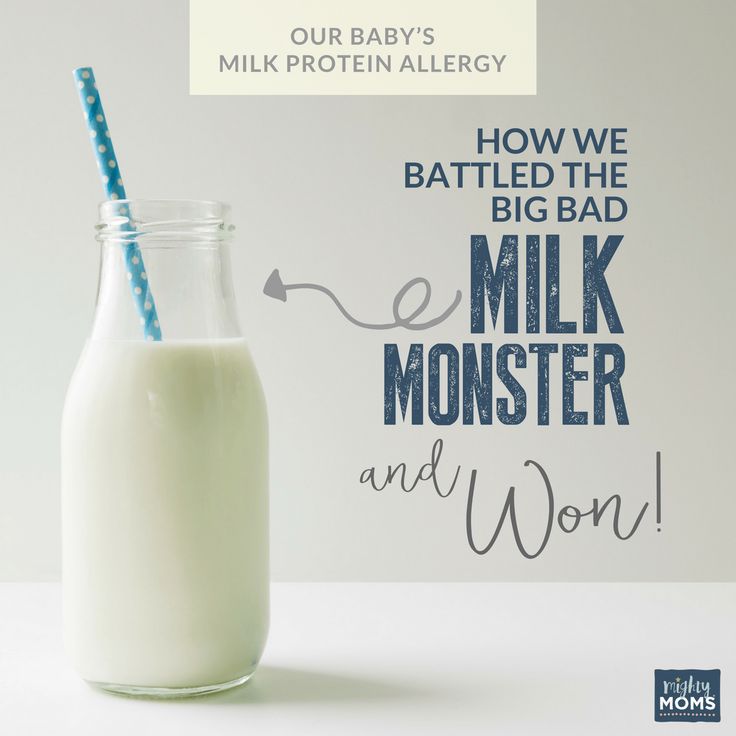 8 fl oz) over 24 hours11 – but as your baby’s stomach is only the size of a marble, that’s all she needs. Colostrum is also very easy to digest. And what it lacks in quantity it makes up for in quality.
8 fl oz) over 24 hours11 – but as your baby’s stomach is only the size of a marble, that’s all she needs. Colostrum is also very easy to digest. And what it lacks in quantity it makes up for in quality.
The composition of colostrum
Colostrum has the same ingredients that your later milk will have – it’s just that the amounts of these ingredients are different, as it’s tailored to your newborn’s needs.
For example, colostrum is sometimes referred to as a natural vaccination because its levels of antibodies and white blood cells are so high. Your first milk needs to contain these so it can protect your baby from infections and diseases after she leaves the safety of your womb.
Colostrum’s protective qualities are also important for your baby’s digestive system. Babies are born with a permeable gut lining, which colostrum coats and seals.12,13 This is particularly important if your baby is premature, as she’ll be more at risk from the dangerous gut condition necrotising enterocolitis (NEC).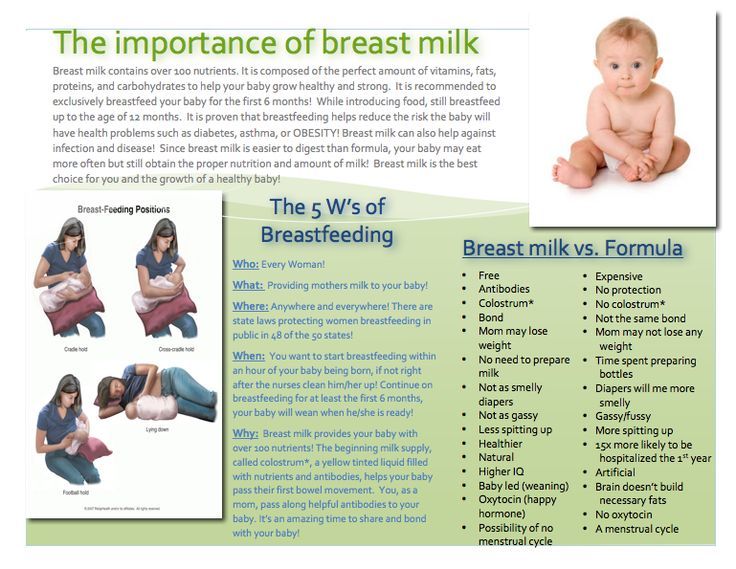 13
13
It’s also rich in minerals and vitamins, with higher concentrations of vitamins A, E and K than mature breast milk. The percentage of protein in colostrum is higher too.1 Colostrum also acts like a laxative that helps your baby pass her first poo, meconium.14
The next couple of weeks: Transitional milk
During the first week of your baby’s life, around two to four days after delivery, your breast milk changes in quantity. You may feel your breasts become fuller and firmer – a change known as your milk ‘coming in’. On the third day, your baby will consume 300 to 400 ml (10.5 to 14 fl oz) of breast milk per 24 hours, and by the fifth day this increases to 500 to 800 ml (18 to 28 fl oz), so it’s not surprising your breasts may feel bigger!11
From day five to 14, your milk is called transitional milk.15 As the name suggests, it’s changing from colostrum to mature milk. It becomes creamier in colour and texture, and also higher in fat, calories and lactose (a natural sugar), making it the ideal food for your rapidly growing newborn.
But rest assured it’s still full of protective antibodies, live cells, ‘good’ bacteria and other bioactive ingredients to help keep her healthy.15
Four weeks onwards: Mature milk
By the time your baby is four weeks old, your breast milk will be fully mature. It’s rich in protein, sugar, vitamins and minerals, plus numerous bioactive components – such as hormones, growth factors, enzymes and live cells – to support your baby’s healthy growth and development.7
From four weeks, the nutritional content and levels of ingredients in mature milk generally remain fairly consistent. But the composition of your breast milk can still change from day to day and feed to feed.
For example, if you or your baby are ill, your body will make antibodies to fight that particular illness, which become part of your milk. And, remarkably, as your baby begins exploring the world and putting toys in her mouth, the level of protective bacteria-fighting enzymes in your milk rises. 16 This variation in breast milk composition shows how it adapts to your baby’s changing needs.
16 This variation in breast milk composition shows how it adapts to your baby’s changing needs.
What are foremilk and hindmilk?
You may notice your milk seems thicker and creamier towards the end of a feed. This is because, as the feed progresses, the fat composition gradually increases due to the mechanics of milk moving through the breast. It’s often referred to as hindmilk, while the first more ‘watery’ milk is known as foremilk. These two names might lead you to think there’s a switch where foremilk becomes hindmilk, but there isn’t. The change is a gradual process.15 Both are essential parts of a completed feed, and rich in vitamins, minerals, protein and sugars.
Your milk’s fat content relates to how drained your breast is. Your breasts will be fuller at the start of some feeds (milk lower in fat) and more drained at the start of other feeds (milk higher in fat). So don’t worry too much about foremilk and hindmilk – over 24 hours your baby will end up consuming a similar amount of fat in total each day. 17
17
Breast milk composition after six months
You may be wondering what happens to your milk if you continue breastfeeding long-term. Can your body really keep producing such high-quality mature milk for months and months, or even years? The answer is, don’t underestimate your breasts!
While it’s true you’ll need to start introducing solids at six months to bolster your baby’s stores of certain nutrients, such as iron,18 your milk will still make up a large part of her diet.
For example, when your baby is seven months old she will still be getting 93% of her calories from breast milk. Even between 11 and 16 months, around half of her daily calorie intake will be from milk.19
So relax in the knowledge that you can both continue to enjoy the benefits of breastfeeding for many months to come.
References
1 Ballard O, Morrow AL. Human milk composition: nutrients and bioactive factors. Pediatr Clin North Am. 2013;60(1):49-74.
2 Hassiotou F et al. Cells in human milk: state of the science. J Human Lact. 2013;29(2):171-182.
3 Beck KL, et al. Comparative proteomics of human and macaque milk reveals species-specific nutrition during postnatal development. J Proteome Res. 2015;14(5):2143-2157.
4 Zhang Z et al. Amino acid profiles in term and preterm human milk through lactation: a systematic review. Nutrients. 2013;5(12):4800-4821.
5 Sánchez CL et al. The possible role of human milk nucleotides as sleep inducers. Nutr Neurosci. 2009;12(1):2-8.
6 Moukarzel S, Bode L. Human milk oligosaccharides and the preterm infant: a journey in sickness and in health. Clin perinatol. 2017;44(1):193-207.
7 Hamosh M. Bioactive factors in human milk. Pediatric Clinics. 2001;48(1):69-86.
8 Brandtzaeg P. The mucosal immune system and its integration with the mammary glands. The J Pediatr. 2010;156(2):S8-15.
9 Uauy R et al. Essential fatty acids in early life: structural and functional role. Proc Nutr Soc. 2000;59(1):3-15.
Proc Nutr Soc. 2000;59(1):3-15.
10 Alsaweed M et al. Human milk cells and lipids conserve numerous known and novel miRNAs, some of which are differentially expressed during lactation. PLoS One. 2016;11(4):e0152610.
11 Neville MC et al. Studies in human lactation: milk volumes in lactating women during the onset of lactation and full lactation. Am J Clin Nutr. 1988;48(6):1375-1386.
12 Marchbank T et al. Pancreatic secretory trypsin inhibitor is a major motogenic and protective factor in human breast milk. Am J Physiol Gastrointest Liver Physiol. 2009;296(4):G697-703.
13 Herrmann K, Carroll K. An exclusively human milk diet reduces necrotizing enterocolitis. Breast Med. 2014;9(4):184-190.
14 Lawrence RA, Lawrence RM. Breastfeeding: A guide for the medical profession; 2011. 1114 p.
15 Martin CR et al. Review of infant feeding: key features of breast milk and infant formula. Nutrients. 2016;8(5):279.
16 Montagne P et al. Changes in lactoferrin and lysozyme levels in human milk during the first twelve weeks of lactation. InBioactive components of human milk 2001 (pp. 241-247). Springer, Boston, MA.
InBioactive components of human milk 2001 (pp. 241-247). Springer, Boston, MA.
17 Kent JC, et al. Volume and frequency of breastfeedings and fat content of breast milk throughout the day. Pediatrics. 2006;117(3):e387-395.
18 Kuo AA et al. Introduction of solid food to young infants. Matern child health J. 2011;15(8):1185-1194.
19 Dewey KG et al. Breast milk volume and composition during late lactation (7-20 months). J Pediatr Gastroenterol Nutr. 1984;3(5):713-720.
Low Milk Supply | WIC Breastfeeding Support
Many moms worry about low milk supply, but most of the time your body makes exactly what your baby needs, even if you don't realize it. There are also ways to tell if your baby is getting enough milk. If you aren't making enough, there are ways you can build your supply. And your WIC breastfeeding staff is always there to help!
Am I Making Enough Milk?
First, look for these signs that your baby is getting enough milk. For example, pay attention to the number of wet and dirty diapers and your baby's weight gain.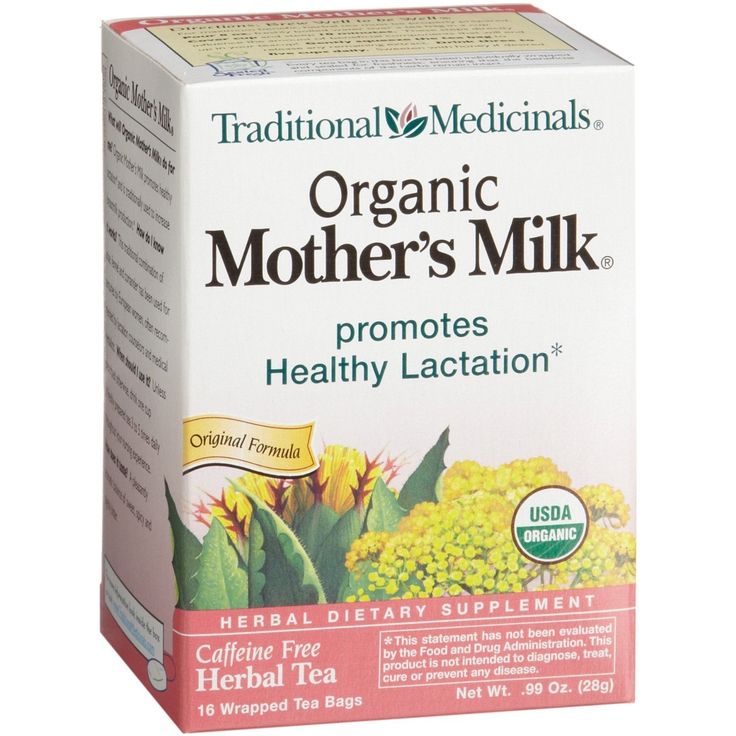
Things you should NOT worry about:
- How your breasts feel. Your breasts will feel softer and less full as your milk supply adjusts to your baby's needs. This does not mean you have low supply.
- If your baby nurses for shorter periods of time, such as only 5 minutes on each breast.
- If your baby's feeds are bunched together. This is called cluster feeding and happens when your baby starts nursing more often and for longer. This can happen in the evenings or because of growth spurts.
- Not getting much milk when you express. Your baby is much more effective than a pump or hand expression at getting out milk. Find tips to help you pump.
If you are still concerned, talk to your baby's doctor about their growth.
Causes of Low Milk Supply
While most moms make plenty of milk, some do have low milk supply. This might happen if you:
- Limit your baby's breastfeeding sessions. Remember, the more you feed on demand, the more milk you make.
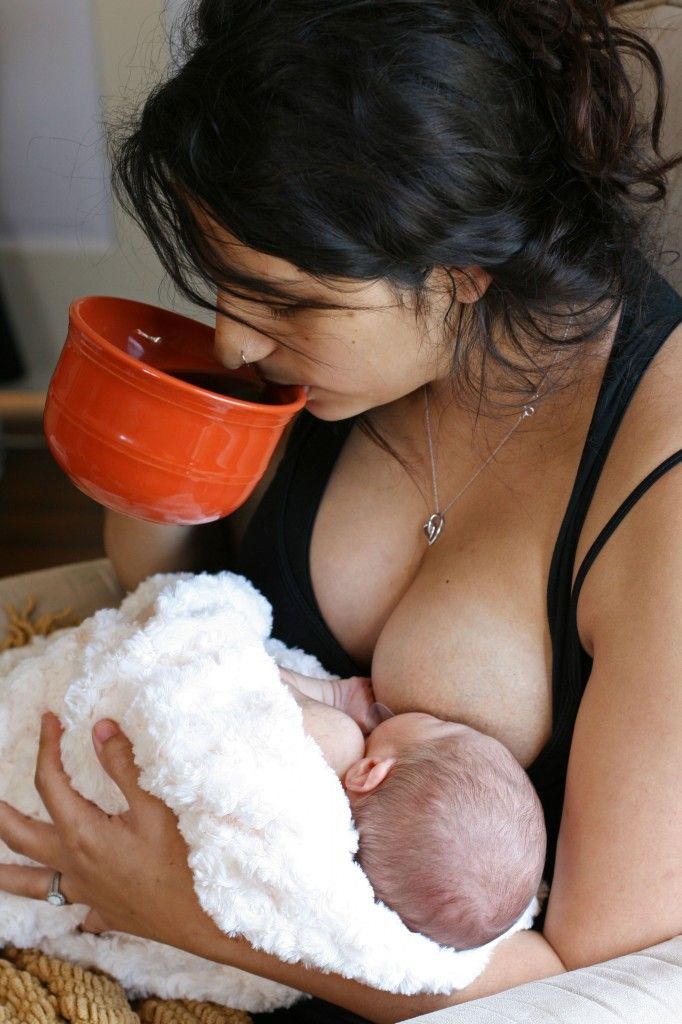
- Give your baby infant formula instead of breastfeeding.
- Introduce solid foods before baby is 4-6 months old.
- Take certain birth control pills or other medicine.
- Don't get enough sleep.
- Drink alcohol or smoke.
- Have had breast surgery.
Talk to your doctor if you have hepatitis B or C, herpes, or diabetes. These conditions may also affect milk supply.
Increasing Your Milk Supply
Breastfeeding frequently—especially in the first hours, days, and weeks—is the main way to increase your milk supply. Your body will make milk to meet your baby's demand.
Try these tips to help you make more milk:
- Breastfeed every time your baby is hungry.
 In the early weeks, your baby will eat 8-12 times every 24 hours. It's best not to put your baby on a strict feeding schedule. Follow your baby's cues, and let your baby tell you when it's time to eat.
In the early weeks, your baby will eat 8-12 times every 24 hours. It's best not to put your baby on a strict feeding schedule. Follow your baby's cues, and let your baby tell you when it's time to eat. - Make sure your baby is latching well.
- Offer both breasts at each feeding. Let your baby finish the first side, then offer the other side.
- Empty your breasts at each feeding. Hand express or pump after a feeding to draw out all the milk and signal your body to make more.
- Avoid bottles and pacifiers in the early weeks. Feed your baby from your breast whenever you can.
- Get plenty of sleep, and eat a healthy diet.
- Pump or express your milk. Pumping or expressing milk frequently between nursing sessions, and consistently when you're away from your baby, can help build your milk supply.
- Relax and massage. Relax, hold your baby skin-to-skin, and massage your breasts before feeding to encourage your milk to let down.

- Take care of yourself. Get plenty of rest, eat well, drink enough fluids, and let others help you.
Consider Charting Your Progress
Record how often your baby is breastfeeding, for how long, and on which sides. If you are supplementing with infant formula, record how much your baby is getting and decrease the infant formula as your milk supply increases. WIC breastfeeding staff can help you determine how much infant formula your baby needs.
Still Have Questions?
Contact your WIC breastfeeding expert. They can talk to you about supply concerns and give you tips to increase your supply to meet your baby's needs.
Composition of breast milk | What is breast milk made of?
Breast milk is rich in nutrients that nourish and protect your baby. But did you know that its composition changes over time? Find out what breast milk is made of and how it adapts to your baby's needs.
Share this information
Breast milk is a baby's very first food, so of course
contains essential nutrients - carbohydrates, proteins, fats, and water to maintain water balance in the body. 1 All this is true. But mother's milk is not just a food product, and it performs not only nutritional functions.
1 All this is true. But mother's milk is not just a food product, and it performs not only nutritional functions.
What is breast milk made of?
Each serving of breast milk contains many other ingredients, many of which are unique.
- Millions living cells. These include white blood cells, which are responsible for strengthening the immune system, and stem cells, which promote the growth and repair of organs. 2
- More than 1000 3 proteins that help your baby's body grow and develop, strengthen his immune system, form and protect brain neurons.
- All proteins in breast milk consist of amino acids . There are more than 20 types of them in milk, and they also include nucleotides, the content of which rises at night. Scientists suggest that they can have a hypnotic effect. 4.5
- More than 200 complex sugars - oligosaccharides 6 that act as prebiotics necessary to maintain a healthy microflora in the intestines of the child.
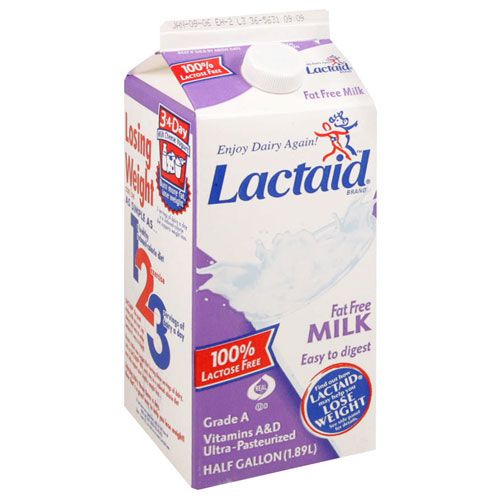 In addition, they prevent infections from entering the bloodstream and reduce the risk of brain inflammation.
In addition, they prevent infections from entering the bloodstream and reduce the risk of brain inflammation. - More than 40 enzymes 7 . Enzymes serve as catalysts for chemical reactions in the body. Breast milk enzymes stimulate digestion and immunity, and help the baby's body absorb iron.
- Growth factors contributing to the normal development of the body. 1 They affect the state of many organs and systems, including internal organs, blood vessels, nervous system and glands responsible for the production of hormones.
- By the way, there are a lot of hormones in breast milk! 7 These smart chemicals are responsible for the exchange of information between tissues and organs, ensuring their normal functioning. Some hormones control appetite, others sleep, and some are even responsible for strengthening the bond between mom and baby.
- Vitamins & Minerals - Nutrients that support normal growth and function of organs and the formation of teeth and bones.
 1
1 - Antibodies or immunoglobulins. There are five main types of antibodies, and all of them are present in breast milk. 8 Antibodies neutralize bacteria and viruses, protecting the child's body from infections and diseases.
- You may have heard of long chain fatty acids , which play a key role in the formation of the child's nervous system and the development of the brain and eyes. 9 So, they are also present in breast milk!
- 1400 species miRNA . It is believed that they control gene expression, prevent and stop the development of diseases, support the immune system of the child, and also affect the change in the structure of the mother's breast. 10
This long list includes only a subset of the ingredients in breast milk—and scientists are discovering new substances in the meantime. Interestingly, the content of these ingredients varies depending on the age and needs of the child.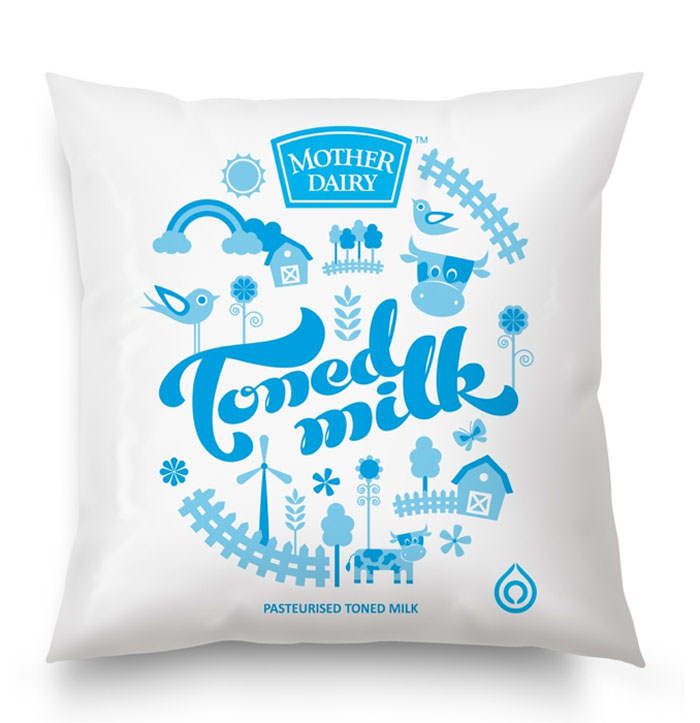
Let's start from the beginning...
In the early days: colostrum
The first milk that is produced immediately after the birth of a baby is called colostrum. This thick, sticky liquid is often referred to as "liquid gold," and not just for its yellow or orange color. Colostrum performs an important function of nourishing and protecting the fragile body of a newborn baby.
Very little milk is produced at first - only 40-50 ml per day 11 . But the stomach of a newborn is very tiny, so this is quite enough. In addition, colostrum is very well digested. And the small volume is more than offset by its high-quality composition.
Composition of colostrum
Colostrum contains the same substances as breast milk in the following weeks, but in a different ratio, according to the needs of the newborn.
Colostrum, for example, is sometimes called nature's vaccine for its high levels of antibodies and white blood cells. After the child leaves safe mother's womb, the first milk helps to protect it from infections and diseases.
In addition, the protective properties of colostrum play an important role in strengthening the baby's digestive system. Colostrum protects and strengthens the mucosa of the gastrointestinal tract, which is highly permeable in newborns. 12.13 This is especially important if the baby is born prematurely, as this increases the risk of necrotizing enterocolitis. 13
In addition, colostrum is rich in minerals and vitamins, and contains more vitamins A, E and K than in mature breast milk. The protein content is also increased. 1 Colostrum also has a laxative effect, helping to eliminate meconium (original feces). 14
In the next few weeks: transitional milk
During the first week of a baby's life, about two to four days after birth, breast milk production increases. The breast becomes larger and firmer - milk begins to "come". On the third day, the baby consumes 300-400 ml of breast milk per day, and by the fifth day - already 500-800 ml. No wonder breasts seem bigger!
No wonder breasts seem bigger!
Milk produced from days 5 to 14 is called transitional milk. 15 As the name suggests, this period is the transition from colostrum to mature breast milk. It becomes thicker and lighter, the content of fat and lactose (natural sugar) increases in it, and the calorie content increases. All this makes transitional milk an ideal food for the rapidly growing body of a newborn.
But despite the change in structure, transitional milk still contains a large amount of antibodies, living cells, beneficial bacteria and other biologically active substances necessary for the health of the child. 15
After four weeks: mature milk
By the time the baby is four weeks old, breast milk
has reached full maturity. It is rich in proteins, sugar, vitamins and minerals, as well as all kinds of biologically active components - hormones, growth factors, enzymes and living cells. All this ensures healthy growth and development of the child. 7
7
After four weeks, the nutritional content and ingredient ratios of mature milk are generally fairly stable. However, the composition of milk at different times and in different feedings can still vary.
For example, if a mother or child is sick, the mother's body produces antibodies to the causative agents of this disease, and these antibodies pass into breast milk. And when the baby begins to explore the world and taste toys, the content of protective antibacterial enzymes in breast milk increases. 16 In other words, the composition of breast milk is adapted to the needs of the baby.
What is foremilk and hindmilk?
You may have noticed that milk becomes thicker towards the end of a feed. The fact is that as you feed, the fat content of milk gradually increases. This is due to the mechanical features of the movement of milk in the breast. The thick milk coming at the end of a feed is often referred to as "hind" milk, while the thinner milk at the beginning of a feed is often referred to as "fore".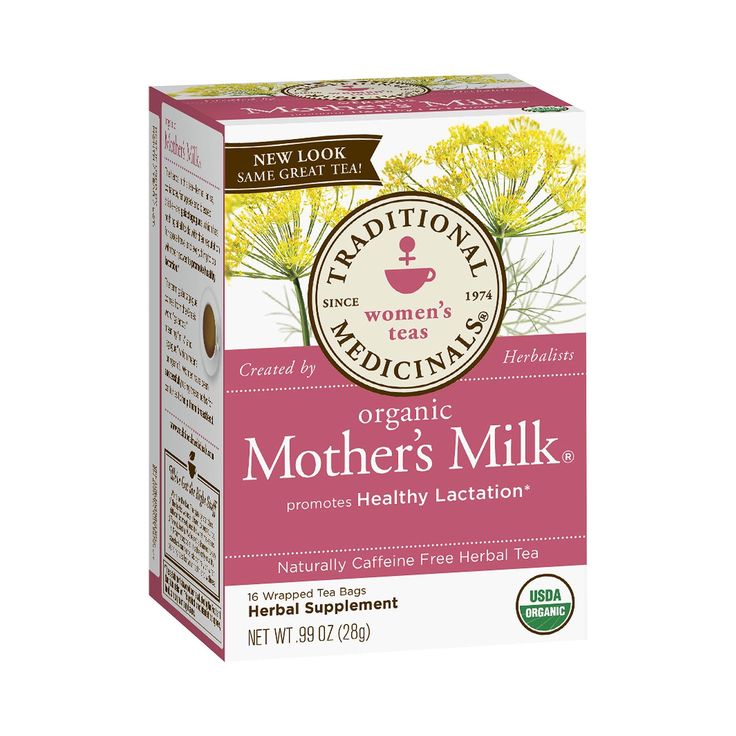 You might think that the transition from "front" milk to "back" occurs at some specific moment, but this is not so - the change in consistency occurs gradually. 15 Both types of milk are essential for a full serving and both are rich in vitamins, minerals, protein and sugar.
You might think that the transition from "front" milk to "back" occurs at some specific moment, but this is not so - the change in consistency occurs gradually. 15 Both types of milk are essential for a full serving and both are rich in vitamins, minerals, protein and sugar.
The fat content of milk depends on how full the breast is. At the beginning of feeding, the breasts can be filled more (and then the milk will be less fat) or less (and then the milk will be more fat). But do not worry about the amount of "forward" and "hind" milk - in general, every day the baby receives approximately the same amount of fat. 17
Composition of breast milk after six months
You may be wondering what will happen to milk during
prolonged breastfeeding. Will the body be able to produce high quality mature milk for months or even years? Answer: do not underestimate the possibilities of the mother's breast!
Although it is indeed time to start solid foods at six months of age to replenish the baby's stores of certain nutrients, such as iron, 18 breast milk still plays a big role in his diet.
For example, at the age of seven months, a baby still receives 93% of its calories from breast milk. And even between 11 and 16 months, mother's milk provides the baby with about half of the daily calorie intake. 19
So rest easy, breastfeeding will benefit you and your baby for many months.
Literature
1 Ballard O, Morrow AL. Human milk composition: nutrients and bioactive factors. Pediatric Clin North Am. 2013;60(1):49-74. Ballard O., Morrow AL, "Composition of breast milk: nutrients and biologically active factors". Pediatrician Clean North Am. 2013;60(1):49-74.
2 Hassiotou F et al. Cells in human milk: state of the science. J Human Lact . 2013;29(2):171-182. — Hassiot F. et al., "Breast Milk Cells: What the Science Knows." J Human Lact (Journal of the International Association of Lactation Consultants) .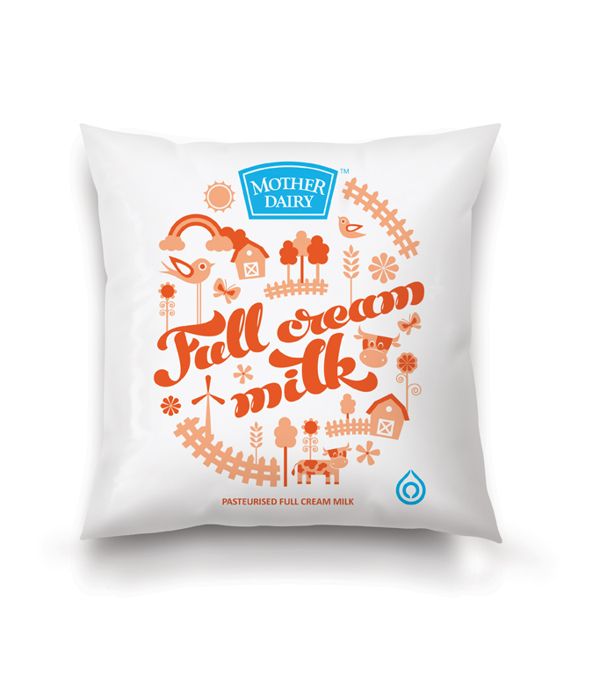 2013;29(2):171-182.
2013;29(2):171-182.
3 Beck KL Comparative proteomics of human and macaque milk reveals species-specific nutrition during postnatal development. J Proteome Res . 2015;14(5):2143-2157. - Beck K.L. et al., "Comparative proteomics of human and macaque milk demonstrates species-specific nutrition during postnatal development." G Proteom Res. 2015;14(5):2143-2157.
4 Zhang Z et al. Amino acid profiles in term and preterm human milk through lactation: a systematic review. Nutrients. 2013;5(12):4800-4821. - Amino acid profile of milk after term and preterm birth: a systematic review. Nutrients. 2013;5(12):4800-4821.
5 Sánchez CL et al. The possible role of human milk nucleotides as sleep inducers. Nutr Neurosci. 2009;12(1):2-8. - Sanchez S.L. et al., "Nucleotides in breast milk may help the baby fall asleep.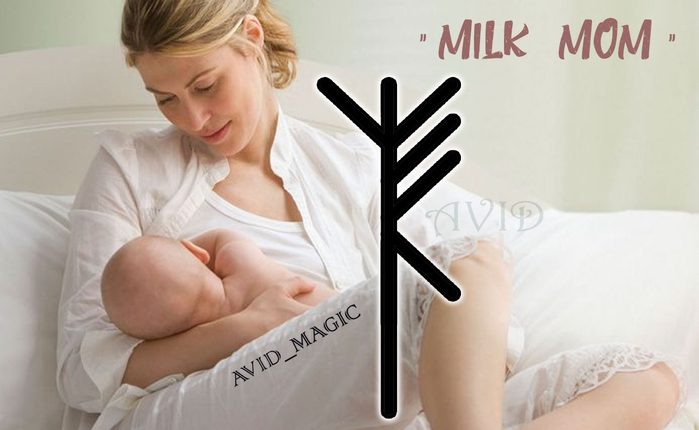 " Nutr Neurosai. 2009;12(1):2-8.
" Nutr Neurosai. 2009;12(1):2-8.
6 Moukarzel S, Bode L. Human milk oligosaccharides and the preterm infant: a journey in sickness and in health. Clin perinatol. 2017;44(1):193-207. - Mukarzel S., Bode L., "Breast milk oligosaccharides and the full-term baby: a path to illness and health." Klin Perinatol (Clinical perinatology). 2017;44(1):19 8-15. - Brandtzeg P., "The mucosal immune system and its integration with the mammary glands". J Pediatrician (Journal of Pediatrics). 2010;156(2):S8-15.
9 Uauy R et al. Essential fatty acids in early life: structural and functional role. Proc Nutr Soc . 2000;59(1):3-15. - Wye R. et al., "Essential Fatty Acids of the First Days of Life: Structural and Functional Role." Nutr Soc. 2000;59(1):3-15.
10 Alsaweed M et al. Human milk cells and lipids conserve numerous known and novel miRNAs, some of which are differentially expressed during lactation. PLoS One . 2016;11(4): e 0152610. - Alsavid M. et al., "Breast milk cells and lipids retain many known and unknown miRNAs, many of which show differential expression during lactation." PLOS One. 2016;11(4):e0152610.
PLoS One . 2016;11(4): e 0152610. - Alsavid M. et al., "Breast milk cells and lipids retain many known and unknown miRNAs, many of which show differential expression during lactation." PLOS One. 2016;11(4):e0152610.
11 Neville MC et al. Studies in human lactation: milk volumes in lactating women during the onset of lactation and full lactation. Am J Clin Nutr . 1988;48(6):1375-1386. - Neville M.S. et al., "Female Lactation Study: Milk Quantity in Lactating Women at the Beginning and Peak of Lactation." Am F Clean Nutr. 1988;48(6):1375-1386.
12 Marchbank T et al. Pancreatic secretory trypsin inhibitor is a major motogenic and protective factor in human breast milk. Am J Physiol Gastrointest Liver Physiol. 2009;296(4):G697-703. Marchbank T. et al., "Trypsin inhibitor in pancreatic secretion as the most important motogenic and protective factor in breast milk". Am Zh Physiol Gastrointest Liver Physiol. 2009;296(4):G697-703.
Am Zh Physiol Gastrointest Liver Physiol. 2009;296(4):G697-703.
13 Herrmann K, Carroll K. An exclusively human milk diet reduces necrotizing enterocolitis. breastmed. 2014;9(4):184-190. - Herrmann K, Carroll K, Exclusive breastfeeding reduces the risk of necrotizing enterocolitis. Brest Med (Breastfeeding Medicine). 2014;9(4):184-190.
14 Lawrence RA, Lawrence RM. Breastfeeding: A guide for the medical profession. 7th ed. Maryland Heights MO, USA: Elsevier Mosby; 2010. 1128 p - Lawrence R.A., Lawrence R.M., "Breastfeeding: A guide for healthcare professionals." Seventh edition. Publisher Maryland Heights , Missouri, USA: Elsevier Mosby; 2010. Pp. 1128.
15 Martin CR et al. Review of infant feeding: key features of breast milk and infant formula. Nutrients. 2016;8(5):279. - Martin S.R. et al., Review of Infant Feeding Issues: Key Features of Breast Milk and Infant Formula. Nutrients. 2016;8(5):279.
- Martin S.R. et al., Review of Infant Feeding Issues: Key Features of Breast Milk and Infant Formula. Nutrients. 2016;8(5):279.
16 Montagne P et al. Changes in lactoferrin and lysozyme levels in human milk during the first twelve weeks of lactation. InBioactive components of human milk 2001 (pp. 241-247). Springer, Boston, MA. - Montagne, P. et al. "Changes in lactoferrin and lysozyme levels in breast milk during the first twelve weeks of lactation". In the collection "Biologically active components of breast milk" 2001 (pp. 241-247). Springer, Boston, Massachusetts.
17 Kent JC, et al. Volume and frequency of breastfeedings and fat content of breast milk throughout the day. Pediatrics. 2006;117(3): e 387-395. - Kent J.S. et al., "Amount and frequency of feedings and fat content of milk during the day". Pediatrix (Pediatrics). 2006;117(3):e387-395.
18 Kuo AA et al.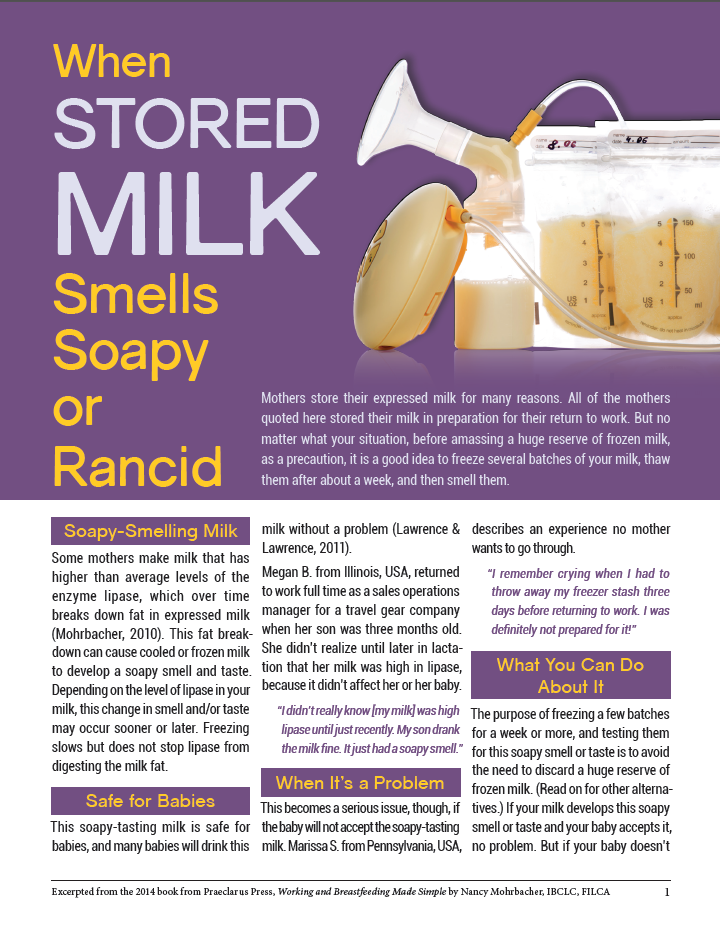 Introduction of solid food to young infants. Matern child health J. 2011;15(8):1185-1194.- Kuo A.A. and co-authors. Complementary feeding. Matern child health (Maternal and child health). 2011;15(8):1185-1194.
Introduction of solid food to young infants. Matern child health J. 2011;15(8):1185-1194.- Kuo A.A. and co-authors. Complementary feeding. Matern child health (Maternal and child health). 2011;15(8):1185-1194.
19 Dewey KG Breast milk volume and composition during late lactation (7-20 months). J Pediatr Gastroenterol Nutr . 1984;3(5):713-720. — Dewey C.G. et al., "Amount and composition of breast milk in late lactation (7-20 months)". F Pediatrician Gastroenterol Nutr. 1984;3(5):713-720.
Lack of milk in a breastfeeding mother
The ideal food for a baby is breast milk, which contains enough enzymes, hormones and vitamins. There is no equivalent analogues to this unique product. It consists of almost 700 components, each of which plays an important role in the growth of the baby.
 Many of the constituents of breast milk cannot be artificially recreated. For example, in the milk formula of any brand, presented on the shelves of stores and pharmacies, contains 10 times fewer components.
Many of the constituents of breast milk cannot be artificially recreated. For example, in the milk formula of any brand, presented on the shelves of stores and pharmacies, contains 10 times fewer components.
The advantages of breast milk are expressed in its nutritional value, good digestibility. It contains leukocytes, various anti-infectious factors that protect the newborn from dangerous diseases. The polyunsaturated fatty acids contained in this product help the child's brain to fully develop. The indisputable advantages of breastfeeding include the possibility of forming a close emotional connection between the baby and mother.
Every woman who carries a 9-month-old baby under her heart has heard about the benefits of natural lactation. All this time she is waiting for a meeting with the baby, not doubting how she will feed him. Therefore, after the first meeting and an exciting adaptation period, the situation becomes completely unexpected when one morning the feeling of fullness disappears in the chest. Not fully understanding what is happening, the mother tries to feed the screaming baby, but for some reason he refuses to eat: he cries, takes the breast again, then quits, behaves anxiously and does not calm down.
Not fully understanding what is happening, the mother tries to feed the screaming baby, but for some reason he refuses to eat: he cries, takes the breast again, then quits, behaves anxiously and does not calm down.
Frequent attachment, changing breasts and feeding positions are completely ineffective. After a few days of such a struggle, the woman falls into despair and decides to stop breastfeeding. The child is bought infant formula, hoping to end this turbulent period as soon as possible. However, such drastic decisions should not be made in a hurry.
The main task of the mother is to find the strength in herself to fight for the preservation of lactation. It is important to remember that such a problem, regardless of the reasons that provoked it, in most cases can be solved with a positive outcome.
How to understand that there is a lack of milk
Put the panic on the back burner and put in a little effort to sort out the situation. If after feeding the baby cries, after a short time it again requires a breast, then it is worth being worried about his condition. However, it is important to understand that the cause of such behavior of the child is not always hunger.
If after feeding the baby cries, after a short time it again requires a breast, then it is worth being worried about his condition. However, it is important to understand that the cause of such behavior of the child is not always hunger.
Possible causes:
-
A highly developed sucking reflex, which the baby will be able to realize with close tactile contact with his mother.
-
The child is weak or unwell, which is why he refuses to eat.
-
A lactation crisis has set in - a nursing woman can encounter such a phenomenon at 1.5-2 months, and it is usually associated with the growth of the baby (more milk is required, but the female body needs some time to adjust to new conditions).
-
The psychological mood of the mother is disturbed - an important fact that should not be underestimated. It is extremely important that comfortable conditions are created for a nursing woman, excluding stressful situations.
 Family statements such as “You don’t have enough milk” significantly increase the chances of stopping breastfeeding.
Family statements such as “You don’t have enough milk” significantly increase the chances of stopping breastfeeding. -
A small child is incorrectly applied to the breast - the mouth is not open wide, most of the chest areola is under the baby's mouth (and should be placed above it), the mother feels constant pain during feeding (the result of an incorrectly taken posture, due to which the child's tongue does not take up space on gum or there is a problem with a short frenulum).
The easiest way to make sure you're getting enough milk is to do the "wet diaper test". To do this, you will need to remove the diaper from the crumbs for a day to calculate the amount of urination. If there are at least 8 of them, then there is no reason to worry.
Signs of lack of milk:
-
Problems with weight gain - the child's body weight increases slightly, remains unchanged or decreases.
-
A small daily amount of urination - less than 8 times, concentrated urine (dark, with a strong odor).
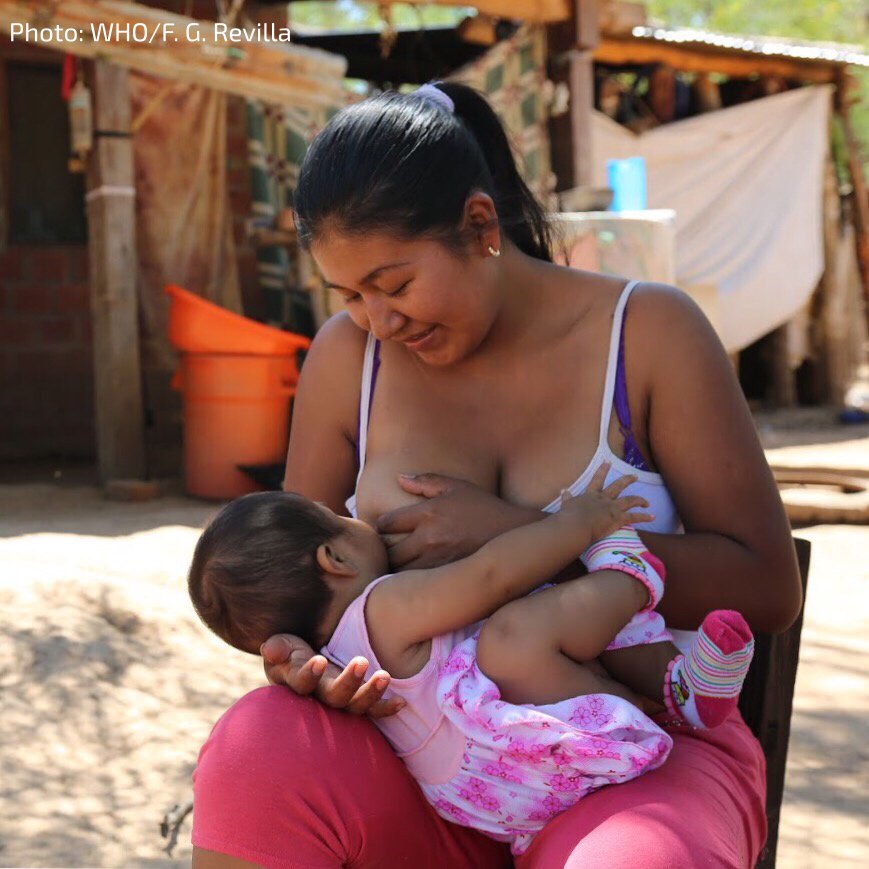
-
Decreased stool frequency - less than 3 times a day (for a child 1.5 months old).
Even after making sure of the presence of these factors, a nursing woman should not independently decide on the completion of lactation. It is recommended that you talk to your doctor, breastfeeding consultants (if available in your area), moms with positive lactation experiences, and try to make some successful breastfeeding strategies a reality.
How to solve the problem of lack of milk
To stimulate lactation, lactating women are recommended:
-
Apply regularly to the breast, without a regimen, on demand - in the first six months of a baby's life, you do not need to try to withstand 2-3 hours between feedings. The principle of operation of the mammary glands is simple: the more often and more the child eats, the more milk is produced. Especially important are night feedings, which stimulate the production of the hormone oxytocin (responsible for the appearance of milk).
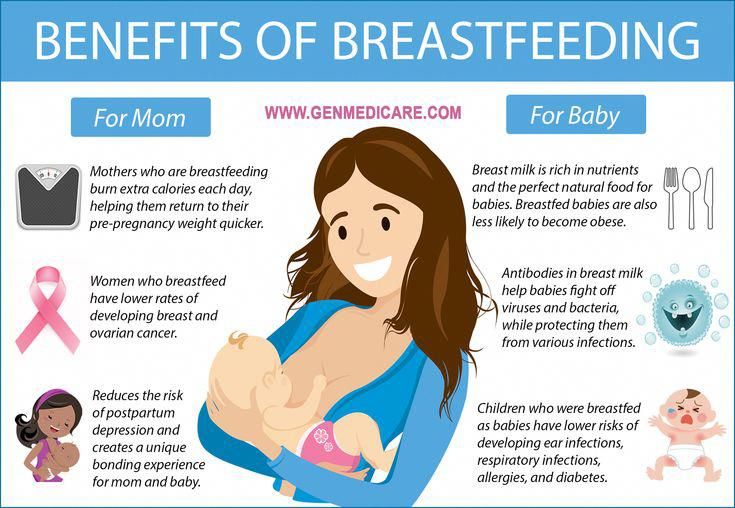
-
Develop a positive attitude - block bad thoughts, think only about yourself and the baby. Avoid stressful situations during which the production of oxytocin is blocked. The key to successful lactation is also a good rest - physical and emotional.
-
Eat right - this item is relevant for any person on the planet, and nursing mothers cannot be an exception. Unfortunately, the appearance of a new family member who requires maximum attention is often accompanied by problems in the nutrition of the new mother. In this situation, it is important to remember that good lactation cannot exist without good nutrition. A balanced, thoughtful diet affects not only the quality of milk, but also its quantity.
-
Use physiotherapy methods to improve lactation - a set of special physical exercises for the back muscles, massage of the chest, the area between the shoulder blades, massage of the collar zone, the use of a contrast shower, warming the legs, hands in hot water will help improve blood flow in the mammary glands (an important condition for normal lactation) .

| Important! Properly organized co-sleeping allows you to make night feedings as comfortable as possible. For example, a crib can be moved to the parents' bed. As a result, the mother will be able to feed the baby without getting up. If he is sleeping, do not wake him up, but simply offer a breast - most babies can eat even in a dream. |
The benefits of lactation infusions and teas for a nursing mother
Drinking enough fluids plays a big role in milk production. The category of popular methods for improving breastfeeding includes special herbal teas, for example, "LaktoMama" , manufactured by Evalar. This product is a collection of herbs grown in the ecologically clean foothills of Altai. It does not contain chemicals, pesticides or other hazardous substances.
As part of LaktoMama tea:
-
Stinging nettle has a pronounced hemostatic effect, which is especially important for the normalization of the contractile function of the uterus of a nursing mother and a significant increase in lactation, it is used to combat anemia, atherosclerosis, beriberi.
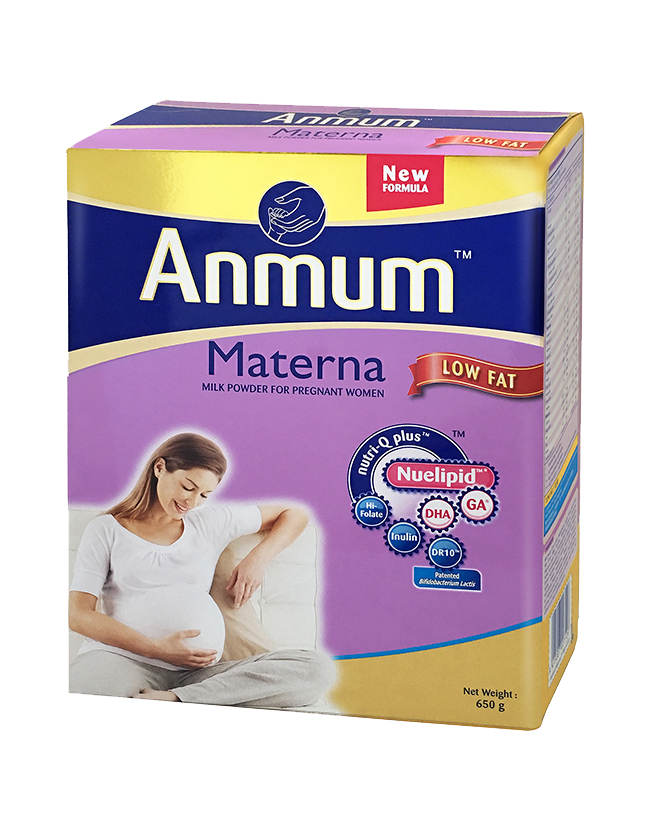
-
Fennel seeds - promote milk production, improve appetite, reduce the risk of gas formation in the gastrointestinal tract of a small child.
-
Melissa - helps to achieve an increase in milk production, shows a slight sedative effect.
-
Oregano is another component that activates lactation, the work of the gastrointestinal tract, helps to get rid of spasms, headaches, has multiple properties, including urinary, bile, diaphoretic.
-
Cumin - has a lactagon effect, also shows an antispasmodic and wind-relieving effect.
Tea "Evalar BIO LaktoMama" is presented in the form of convenient filter bags, each of which should be brewed in 200 ml of boiling water. In order for the herbs to give up their beneficial substances, the tea must be infused for 10-15 minutes. Drinking such a herbal drink is recommended twice a day - in the morning and in the evening.
Benefits of tea "Evalar BIO LaktoMama":
-
antimicrobial treatment of plant materials (the "instant steam" method using a French installation) - contributes not only to disinfection, but also to the fermentation of the finished product, which significantly increases its usefulness;
-
packaging in the form of multilayer protective envelopes that preserve the healing properties, delicate taste and aroma of herbs;
-
more favorable cost in comparison with available analogues.
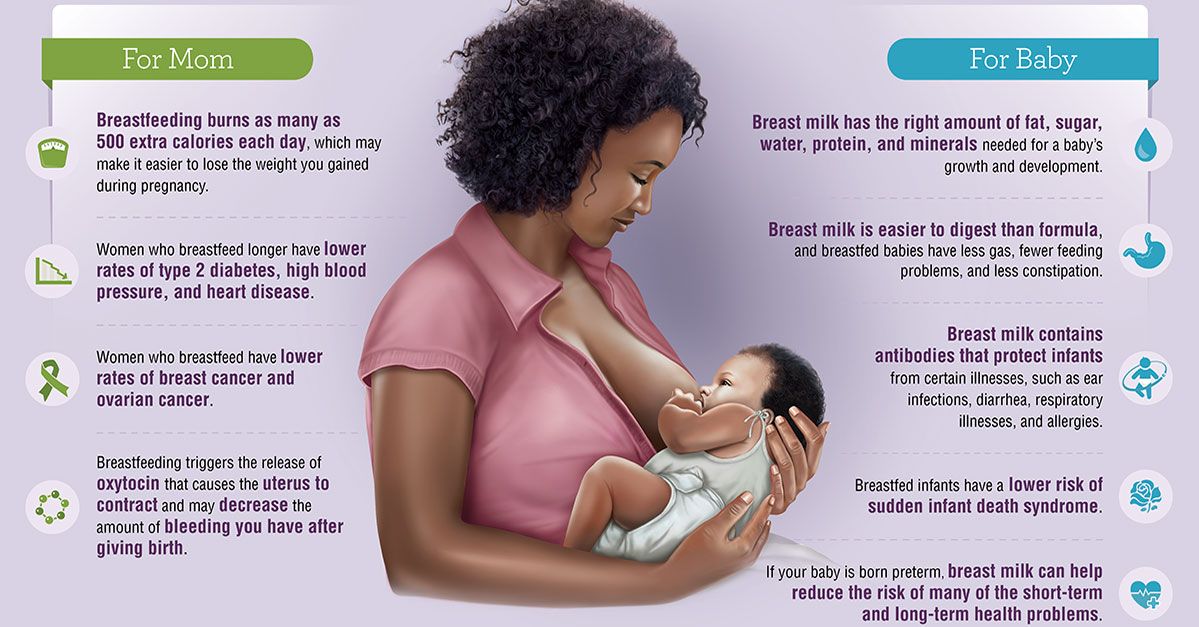
Learn more
